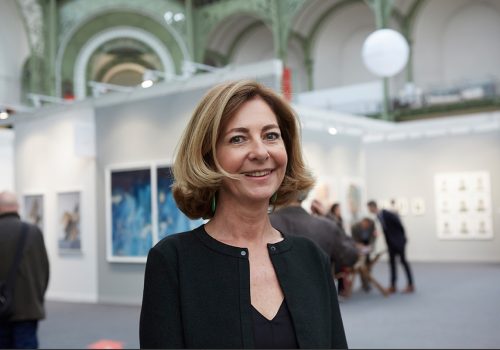Her personal background, her relationship to photography, Paris Photo New York and this 23rd edition held in the Grand Palais: Florence Bourgeois, director of the Parisian fair for the last five years, opens up freely. Interview.
By Sophie Bernard
What were you doing before heading to Paris photo?
My arrival at Paris Photo is a little like a mid-career reconversion since I first had a traditional career: business school, five years of audit, then cost and management accountant at Inès de la Fressange where I discovered the world of luxury. I was then responsible for international management control at Parfums Givenchy (LVMH). This first part of my career was therefore international and financially oriented, very operational because I was in direct contact with sales people. This meant many trips to affiliates company around the world. I loved that first seventeen years.
















